A picture says a thousand words |
more pics |
 |
 |
Hokkien Association - This association of immigrants from Fujian province in South China was founded in the late Ch'ng dynasty. The site was acquired in 1918 and the building was completed in 1931. |
| King Edward VII School - The Central School, started in 1883, was the first English school in the Malay States. It was renamed the King Edward VII School when the present building was opened in 1905. The angsana trees of "the most picturesque school ground in Malaya" were planted in 1910. The school excelled in sports, especially football, rugby, hockey and athletics. During the Japanese Occupation, the school was the base of the garrison commander who converted the classrooms into torture chambers and dup up the playgrounds to grow food. |  |
 |
Taiping Public Library - This government building was once the premises of the Chartered Bank of India, Australia and China, later known as the Standard Chartered Bank, which opened its Taiping agency in 1888. Today, it houses the public library. The predecessor of this library was "an excellent Reading and Recreation Room for the Officers of Government" contructed in 1882. |
| Taiping Market - The Taiping Market consists of two buildings, the Old Market built in 1884 and the New Market built in 1885, each one a timber post and truss structure, "220 feet long by 60 feet wide, concrete floor and iron roof", with a middle clerestory. Possibly the largest non-indigenous historic timber structure in the country, the Taiping Market is also Malaysia's best-preserved example of a major 19th century market building. Today it is still standing and strong as ever. | 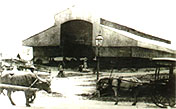 |
 |
British Officers' Mess - The Mess building was of "pleasing design" and "contained expensive silver plates and also souvenirs and relics dating back to the Battle of Waterloo". |
| Perak Museum - The Perak Museum, the first in the country, was started in 1883 in the former government offices. The building was developed in stages from 1886 to 1903. The first curator was Leonard Wray, who built up the much admired natural history and ethnological collections, including a section on the aboriginal peoples. Assembled in the grounds today are a stone marking the site of Maharaja Lela's Fort and the statue of Col. Walker. | 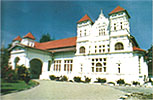 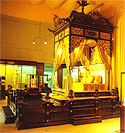
|
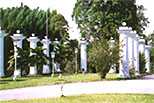 |
.The Residency -The Assistant Resident's House, built in 1884 for over $19,000, was subsequently occupied by the Resident of Perak. Mubin Sheppard later described it as "a cavernous, single storied building, raised on rotund pillars sixteen feet above the ground." What remains are the brick pillars, which decorate the garden of the modern rest house. |
| Kapitan Chung Keng Kooi's Townhouse - A prominent tin-miner and leader of the Taiping Hakka community, Chung Keng Kooi (1829-1901) was also a Kapitan China of Perak and sat on the Perak State Council. His eldest son Chung Ah Yong, who resided here, was a member of the Taiping Sanitary Board and "all the important racing clubs". He employed an European trainer for his prize-winning race horses and maintained his stables at 12,000 dollars a year. |  |
 |
Old Kota Mosque -The oldest mosque in Taiping, with an intriguing six sided facade, was built in brick in 1897. It was originally a Hanafi mosque used by the Indian Muslim community of Kota. In the early 20th century it was given over to the Malay community and called the 'Malay mosque' (Masjid Melayu). Within the old burial ground is the mausoleum of a learned man called Sheikh Makhbuli |
| Town Rest House - The Town Rest House was built in 1894 near the former Taiping Railway Station at Station Road. George Peet who stayed there in 1933 remarked, "It was known as the 'Raja Resthouse' but I could find no rajas in the visitors' book". | 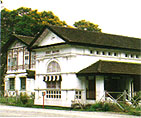 |
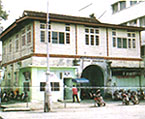 |
Ceylon Association - The Ceylonese Tamils came to Perak in the 1880s to join the civil service and build the railways. In 1899, they founded the Ceylonese Association and put up the building two years later. |
| Peking Hotel - Built in 1929, it was formerly the rubber dealer's association. During the Japanese Occupation, it was the notorious headquarters of the Kampeitei (Japanese military police). | 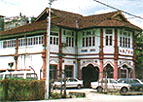 |
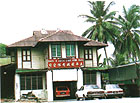 |
Sunlight Muslim Association - The first national conference of Sahabat Pena, a pen-pal club, was held here on 11 November 1934. It was "the first pan-Malayan Malay gathering of a non-official kind ever held." Among those present were Syed Alwi bin Syed Sheikh al-Hadi, S.M. Zainal Abidin and Sheikh Abdullah al-Maghribi, literary figures and Kaum Muda Islamic reformist leaders who were later to become prominent in the Malay nationalist movement. |
| Taiping Gaol - Established in 1879, the Perak Prison was the main prison for long sentenced convicts of the FMS. It housed the Government Printing Office, a bakery and a laundry, where the prisoners did light work. Today, it is the country's best example of a 19th century gaol complex. It has been proposed for a prison museum. |  |
 |
St. George's Institution - The Catholic boys' school was established in 1915 and 13 years later the original building was extended with a wing on each side. During the Japanese Occupation, the school served in turn as Nippon-Go Gakko (Japanese school), Kempeitai (Japanese military police) base and Japanese officers' hotel. |
 |
|